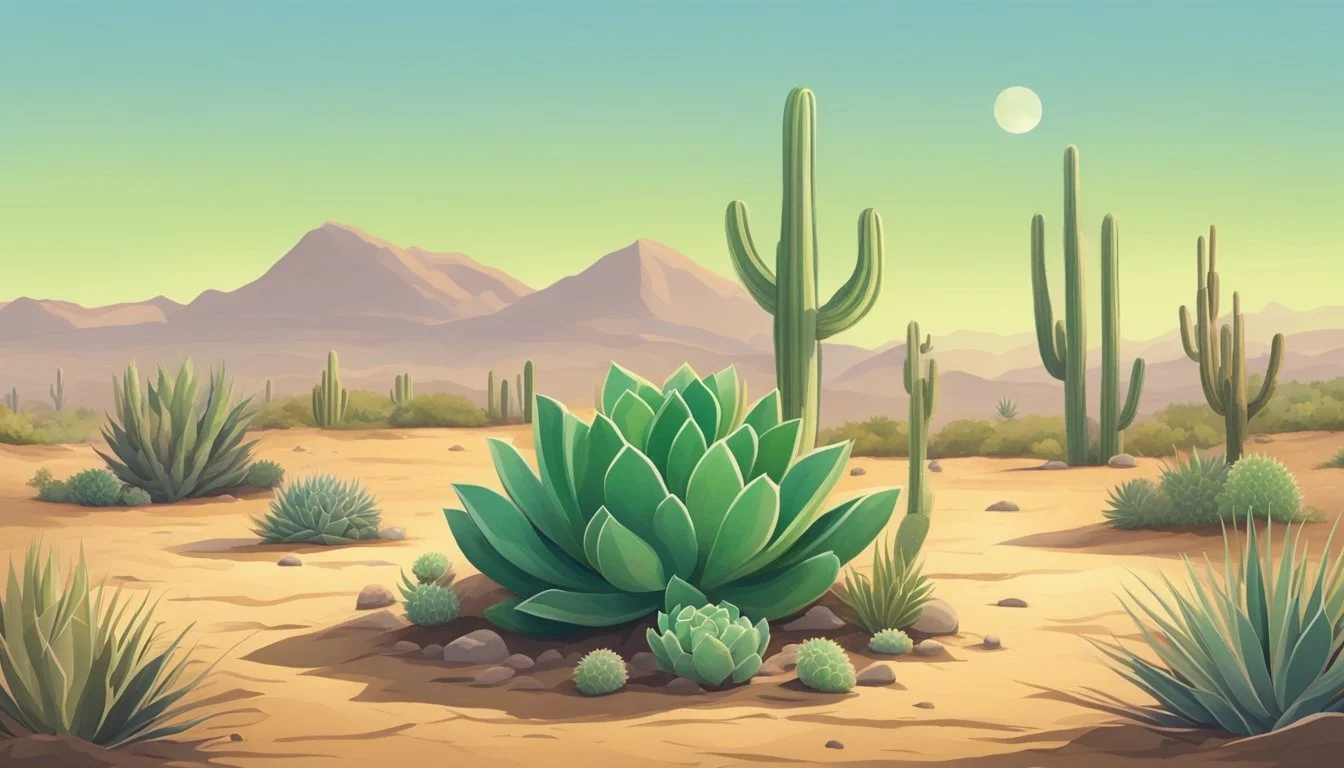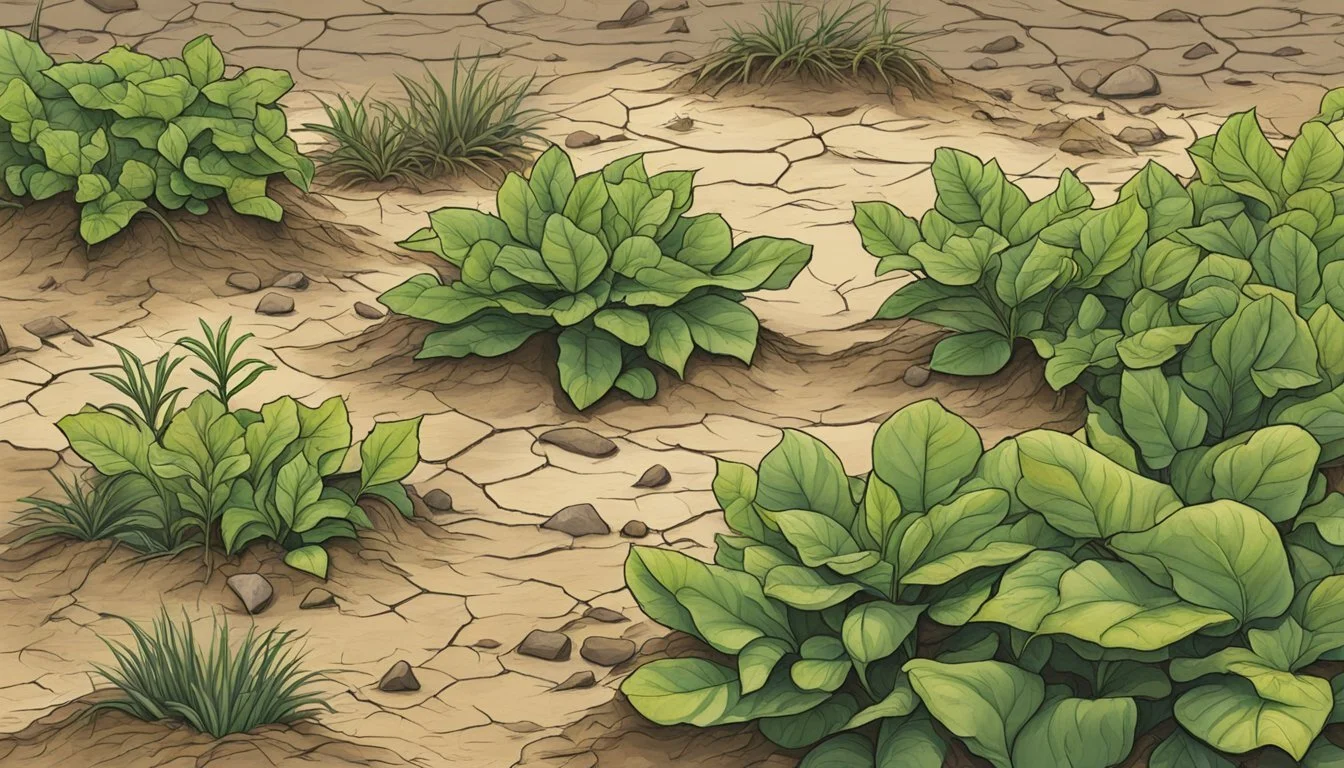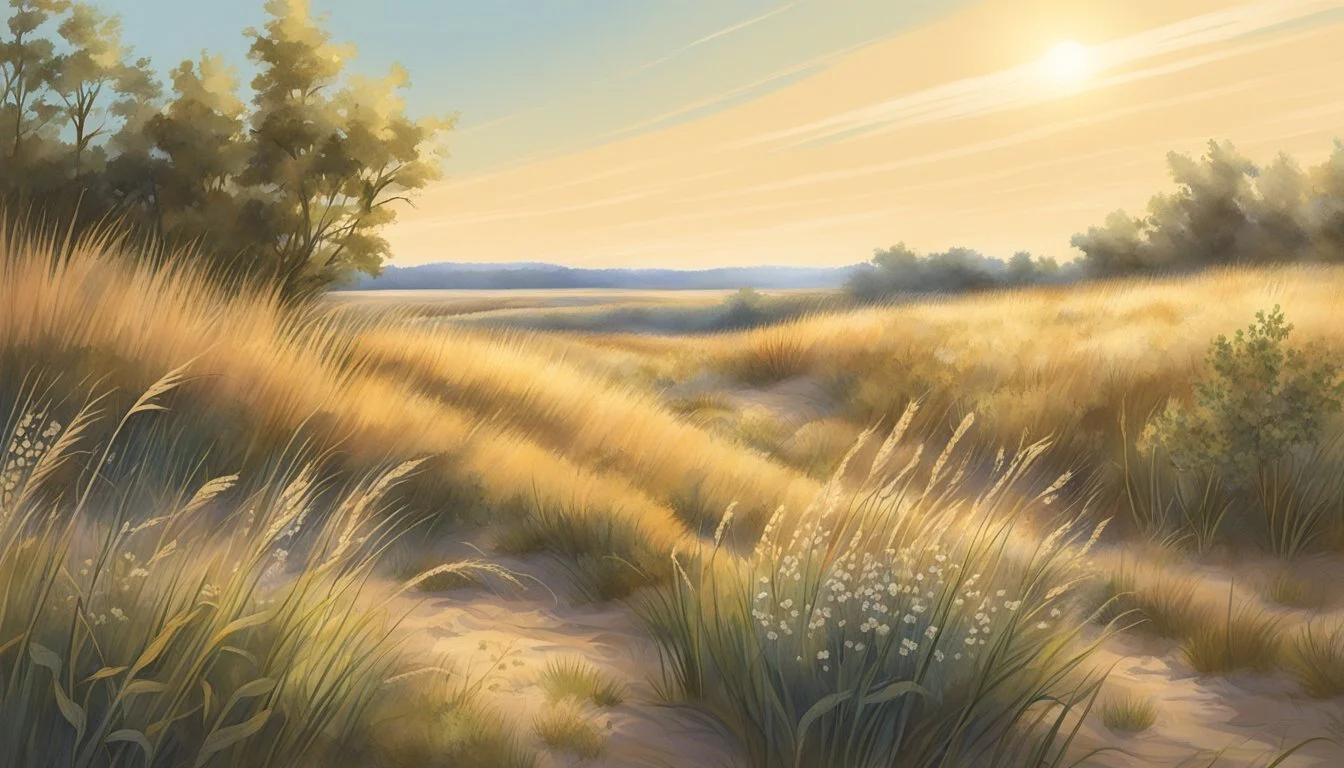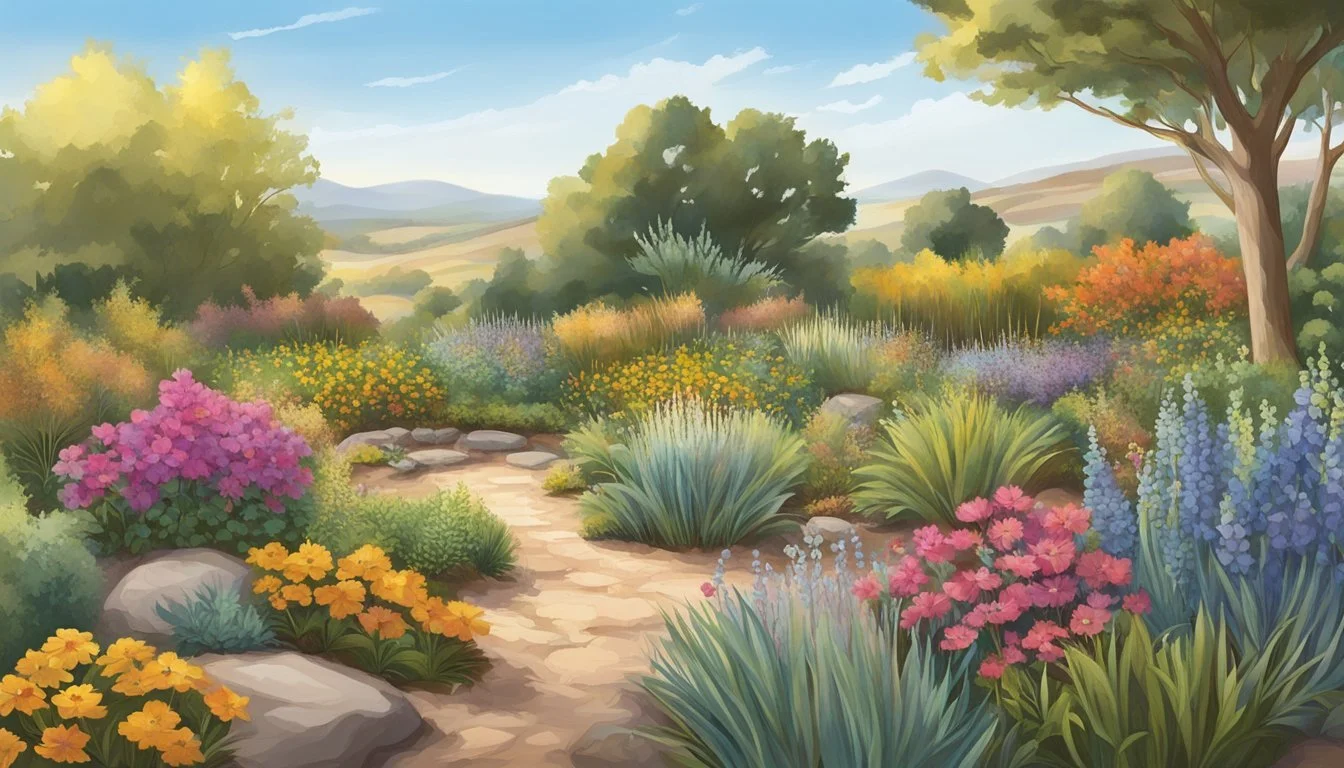Drought-Tolerant Plants in Wisconsin
A Guide to Hardy Landscaping Choices
Gardeners in Wisconsin are no strangers to weather extremes, facing long, cold winters and hot summers. Consequently, incorporating drought-tolerant plants into landscapes has become a practical approach to gardening in the region. Plants that can withstand periods of low rainfall not only conserve water but also reduce maintenance requirements, creating a more sustainable garden environment.
Certain perennials and shrubs have adapted to thriving with minimal water, making them ideal candidates for the Wisconsin climate. For example, plants like yarrow and switchgrass have deep root systems that allow them to access water in the soil more efficiently during dry spells. By choosing the right drought-tolerant plants, gardeners can ensure their gardens remain vibrant and resilient, even during the driest months.
Understanding Drought Tolerance
In the quest for sustainable landscaping, especially in regions like Wisconsin prone to varying moisture levels, incorporating drought-tolerant plants offers a solution that aligns with both ecological balance and aesthetic value. It's imperative to grasp what constitutes a drought-tolerant plant and why integrating these species into landscaping is advantageous.
Defining Drought-Tolerant Plants
Drought-tolerant plants, also known as drought-resistant or xerophytic plants, are flora that have adapted to thrive in environments with prolonged dry periods. They possess specialized physiological and structural traits such as deep root systems, reduced leaf areas, and waxy or hairy leaf surfaces which minimize water loss and maximize water efficiency.
Examples of drought-tolerant plants suitable for Wisconsin landscapes include:
Ornamental grasses like Little Bluestem (Schizachyrium scoparium)
Flowering perennials such as Purple Coneflower (Echinacea purpurea)
Native shrubs like Black Chokeberry (Aronia melanocarpa)
Benefits of Drought-Tolerant Landscaping
Landscaping with drought-tolerant plants presents numerous benefits that extend beyond mere water conservation. Such vegetation supports local ecosystems by providing habitats for native wildlife. Additionally, they demand fewer resources such as fertilizers and pesticides, reducing the environmental footprint of a garden.
The benefits include:
Water Savings: Reduces landscape water usage, a pivotal aspect in areas facing water scarcity.
Maintenance Savings: Lowers the cost and time required for upkeep compared to traditional landscaping.
Environmental Impact: Enhances biodiversity and contributes to soil health improvement.
Selecting plants with inherent drought resistance is crucial for creating resilient gardens that withstand the whims of weather while offering a lush and vibrant vista.
Selecting the Right Plants
When crafting a drought-resistant garden in Wisconsin, one should focus on plant species that thrive in the local climate with minimal water. It's essential to understand the specific site conditions and select plants suited to both Wisconsin's weather patterns and the garden’s sun exposure.
Assessing Site Conditions
Sunlight: Full sun locations in the garden receive at least six hours of direct sunlight daily. Assessing the amount of sun exposure helps determine the range of plants that can be successfully cultivated.
Soil Type: Well-drained soil is paramount for drought-tolerant plants. Test the soil's drainage capabilities by observing how quickly water percolates after a rainy day. Amend the soil if necessary to improve its structure and drainage.
Choosing Plants for Wisconsin Climate
Perennials: Opt for perennials known for their hardiness in varying weather conditions characteristic of Wisconsin gardens. Plants such as coneflowers and sedum can endure hot summers and bitter winters, needing little to moderate watering.
Native Species: Select native plants like the prairie dropseed or butterfly milkweed, which are pre-adapted to the region and require less maintenance, serving as suitable additions for a drought-resistant landscape.
Top Drought-Tolerant Plants for Wisconsin
Wisconsin gardeners often look for plants that can withstand the state's hot, dry summers. Below are the best drought-resistant plants across various categories, each suited to thrive in Wisconsin's climate with minimal watering once established.
Perennials
Echinacea purpurea (Purple Coneflower): These vibrant flowers bring a touch of the prairie to gardens and attract pollinators. They're hardy in zones 3-8 and can grow up to 4 feet tall and 2 feet wide.
Sedum (Stonecrop): Available in a variety of species, stonecrops are succulents that offer interesting foliage and are perfect for xeriscaping.
Coreopsis: Often known as tickseed, coreopsis delights with daisy-like flowers that are highly tolerant to dry conditions.
Perovskia atriplicifolia (Russian Sage): This plant features beautiful lavender-blue spires and silvery foliage that endure even during droughts.
Agastache: Recognized for its fragrant foliage and abundant flowering, agastache is a favorite for a drought-tolerant garden.
Annuals
Portulaca (Moss Rose): This low-growing annual thrives in heat and drought, producing colorful, rose-like flowers.
Euphorbia: These heat-loving, drought-tolerant plants add texture and contrast to containers and flowerbeds with their interesting forms.
Shrubs
Lavandula angustifolia (Lavender): Lavender's aromatic foliage and flowers make it an excellent choice for dry, sunny spots.
Potentilla: A hardy shrub that offers a long season of blooms, typically ranging in shades from yellow to white.
Trees
Quercus species (Oak): Many oaks are drought-tolerant and well-suited to the Wisconsin landscape, providing structure and habitat.
Gleditsia triacanthos (Honey Locust): This tree is valued for its open, airy canopy and tolerance to poor, dry soils.
Plant Care and Maintenance
Drought-tolerant plants in Wisconsin still require attentive care to thrive, particularly focusing on effective watering, soil management, and pest and disease control.
Watering Strategies
Drought-tolerant plants are adapted to cope with low water conditions, but they must be established with consistent moisture. A common recommendation is providing 1 inch of water weekly; however, sandy soils demand 1.5-1.75 inches during severe droughts as they dry out faster. Watering should be done deeply and infrequently to encourage deep root growth, which improves a plant's drought resistance over time.
Soil Preparation and Mulching
Before planting, incorporating organic matter into the soil can significantly improve its water retention and provide essential nutrients. Mulch should be applied around the plants to reduce surface water evaporation and regulate soil temperature. Use organic mulches such as wood chips or leaves, which can break down over time, adding further organic matter to the soil.
Managing Pests and Diseases
Even drought-tolerant species are susceptible to pests and diseases. Regular monitoring is crucial to identify problems early. Powdery mildew, for instance, often affects plants in light shade with poor air circulation. To manage it, one should avoid overhead watering and crowded planting. If pests or diseases are found, they should be treated with an appropriate fertilizer or pesticide, considering organic options to maintain environmental balance.
Attracting Wildlife
In Wisconsin, selecting drought-tolerant plants that serve dual purposes—thriving in limited water conditions and attracting wildlife—is key to a dynamic garden. Drought-tolerant shrubs can be particularly impactful, as they offer shelter and food for various species.
Supporting Pollinators
Shrubs like the Alternateleaf Dogwood are not only resilient in the face of drought but also serve as a crucial nectar source for pollinators. Planting such shrubs will invite a host of beneficial insects, including bees and butterflies, which are vital for pollination. For gardeners aiming to support hummingbirds, incorporating tubular flowers like Penstemon can provide ample nectar.
Essential Plants:
Alternateleaf Dogwood
Penstemon
Beneficial Features:
Nectar-rich flowers
Host plants for butterfly larvae
Providing a variety of flowers that bloom at different times ensures that pollinators have a continuous food source throughout the growing season.
Creating Bird-Friendly Habitats
Creating habitats for birds involves a mix of food sources, such as berries and seeds, and protective cover. Drought-tolerant plants such as coneflowers not only withstand dry conditions but also produce seeds that attract birds. Shrubs with dense foliage give birds a place to nest and hide from predators. To appeal to species like deer and rabbits, gardeners may incorporate plants they naturally graze on, which can keep them away from other more sensitive areas of the garden.
Key Attributes for Bird-Friendly Plants:
Berry-producing: Serviceberry, Viburnum
Seed-producing: Coneflowers, Grasses
For Deer and Rabbits:
Native grasses
Clover varieties
Inclusion of native species enhances the natural ecosystem, providing superior support for the wildlife while promoting biodiversity and resilience in the garden's design.
Designing Drought-Resistant Landscapes
When designing drought-resistant landscapes in Wisconsin, gardeners focus on strategic plant selection and layout to withstand summer heat while maintaining visual appeal. It's important to choose plants that can thrive with minimal water and to arrange them in a way that's both functional and attractive.
Plant Grouping and Aesthetics
In Wisconsin, grouping plants with similar water needs creates an efficient layout that conserves moisture and simplifies maintenance. Ground cover plants, with their low profile and expansive coverage, can reduce soil dehydration and provide a lush appearance even in arid conditions. Incorporating flower spikes from plants like Agastache can add vertical interest and beautiful blooms that attract pollinators.
For aesthetic coherence, integrating plants with various textures and forms creates a balanced landscape. A mix of ornamental grasses, for example, can impart a soft texture alongside the more structured forms of drought-resistant shrubs.
Using Color and Texture
The interplay of color and texture is crucial for visual interest in drought-tolerant landscaping. Silver and blue-hued foliage, exemplified by Russian sage, remains vibrant under the intense summer heat. These hues alongside the silvery-green of lamb's ear can contrast beautifully against the earth tones of decorative mulch.
Plants that serve as both a cut flower and a drought-tolerant species, like the Echinacea or coneflower, provide bright pops of color. They come in a range of colors from bright pink to orange and are an excellent choice for adding variety to the garden palette. The contrast of their bold colors against the neutral backdrop of arid-resistant foliage can create a visually stunning display.
Sustainable Practices in Gardening
Sustainable gardening embraces methods that are both beneficial for the environment and practical for maintaining healthy plant growth even in challenging conditions such as drought. It encourages gardeners to be resourceful with water, select appropriate plant species, and support the surrounding ecosystem.
Reducing Lawn Areas
Reducing the size of one’s lawn can have a significant impact on water conservation. Lawns typically require extensive irrigation to remain healthy, especially during the drier months of early fall. By limiting the turf area and replacing it with drought-tolerant plants, gardeners can create landscapes that require less water and maintenance. This approach not only saves water but can also introduce a diverse range of textures and colors to the garden. Grass alternatives for Wisconsin include low-growing, tough ground covers that thrive with minimal watering after their second year of establishment.
Incorporating Organic Practices
Organic gardening practices enhance the sustainability of a garden, especially regarding soil health and water retention. Utilizing organic mulches like straw or wood chips helps to retain soil moisture, reducing the need for frequent watering. This approach is particularly beneficial for established drought-tolerant species in early spring when they start to grow and need support. Gardeners can also incorporate compost to improve soil structure and fertility, which, in turn, increases the soil’s ability to hold water during dry periods. Selecting the right organic amendments supports the natural resilience of drought-tolerant plants, allowing the garden to flourish even under water-scarce conditions.
Regional Considerations
When selecting drought-tolerant plants for Wisconsin, one must consider the unique climatic challenges of the state. Compared to regions like Florida and California, Wisconsin experiences distinct seasonal changes that influence plant hardiness and drought resistance.
Local Varieties and Adaptations
Wisconsin gardeners and landscapers should prioritize local varieties of plants that have adapted to the state's climate extremes. Unlike Texas or South Dakota, where heat and dry weather extensively influence plant selection, Wisconsin's relatively cooler climate allows for a different range of plant species. Many native species are adapted to survive the state's cold winters and the dry periods that can occur during its variable summers. For example, local varieties of deciduous trees and herbaceous perennials are more likely to withstand periods of drought typical of Wisconsin than some non-native species that may thrive in Minnesota or Indiana.
It is essential to consider that Wisconsin's soil types, which range from sandy soils that dry out quickly to heavier clay-based soils, can affect watering needs. Sandy soils in the region may demand more frequent watering than loam or clay soils, which retain moisture better, requiring closer attention during prolonged dry spells.
Propagation and Cultivation
Successful propagation and cultivation of drought-tolerant plants in Wisconsin can ensure a resilient garden, especially considering the state's fluctuating weather patterns. This section provides practical guidance on starting drought-tolerant plants from seeds and transplanting or dividing established plants.
Starting from Seeds
To start drought-tolerant plants from seeds, one must understand that these species often have specific germination requirements. Stratification—the process of treating seeds to simulate natural conditions that they must experience before germination—can be crucial. Depending on the species, some seeds may require a period of cold exposure, while others might need light to germinate. For instance, the seeds of native prairie plants, like those mentioned in the Wisconsin Horticulture guide on Liatris, often require a stratification period to break dormancy.
Seed starting should be timed appropriately to allow for sufficient growth before transplanting outdoors. Typically, seeds are sown indoors during late winter or early spring, providing adequate time for seedlings to strengthen before moving to the garden.
Sowing instructions:
Depth: Plant seeds at a depth approximately three times the diameter of the seed.
Watering: Maintain a consistent but moderate level of moisture to encourage germination without causing rot.
Temperature: Keep the seeds at a stable temperature suitable for the plant species you are growing.
Transplanting and Dividing
Transplanting seedlings or dividing mature drought-tolerant plants are methods to expand your garden or manage plant growth. Before transplanting, it’s vital to ensure that the soil is well-prepared and that the timing aligns with the plant's growth cycle to minimize stress. For perennials that grow from a rhizome, such as some native Wisconsin grasses, division is best done in early spring or fall when the plant is not actively flowering.
Transplanting tips:
Soil preparation: Amend the soil with organic matter to improve its structure and water retention capabilities.
Root disturbance: Handle the roots gently and minimize disturbance to reduce transplant shock.
Watering: After transplanting, provide ample water to help the plants establish, but avoid overwatering to prevent root issues.
When dividing plants, carefully separate the rhizome with a sharp, sterile tool, ensuring that each division has a healthy portion of roots and shoots. Replant divisions promptly, following the same care guidance as for transplanted seedlings.
Troubleshooting Common Issues
When cultivating drought-tolerant plants in Wisconsin's unpredictable climate, gardeners may face a variety of challenges. Effective troubleshooting is crucial for maintaining a resilient garden.
Dealing with Extreme Weather
Drought Conditions: To protect plants reputed to be tough as nails during severe dry spells, a deep watering strategy is advisable. Deep watering promotes extensive root systems that can access moisture from deeper soil layers. One can refer to the University of Wisconsin-Extension's guide on deep watering techniques for supplementing rainfall.
Sudden Rainfall: After extended dry periods, sudden heavy rain can shock plants. It's recommended to gradually increase moisture levels by manually watering before rain is forecasted, allowing plants to adjust their physiological processes and better cope with the abundant water.
Handling Soil Problems
Poor Drainage: Drought-tolerant plants typically prefer well-drained soils. If soil is retaining too much moisture, consider amending with organic matter or coarse sand. These additions can enhance drainage and prevent root rot, which would otherwise be detrimental to plants that thrive in drier conditions. Details on soil amendments appropriate for Wisconsin landscapes are available through the University of Wisconsin-Extension.
Nutrient Deficiencies: Dry soils can become nutrient-deprived. They should be fortified with slow-release fertilizers that provide a consistent supply of nutrients without overwhelming the plants during stressful conditions. Choose fertilizers tailored to the specific plant species, as listed in resources such as "Drought Tolerant Plants for Landscaping in Southeastern Wisconsin" provided by SEWRPC.
By anticipating and promptly addressing these issues with confident and clear action plans, one can ensure their drought-resistant plants remain robust and decorative even when facing the extremes of Wisconsin's weather.
Frequently Asked Questions
In Wisconsin, selecting the right plants for your garden that can withstand dry conditions without requiring constant care is essential. Here are some of the most common questions about drought-tolerant plants suitable for Wisconsin climates.
What are the best low maintenance perennials for Wisconsin?
Low maintenance perennials suited for Wisconsin include species such as Purple Coneflower, Black-Eyed Susan, and Russian Sage. These plants can survive with minimal watering once established, making them ideal for the region's variable climate.
Which trees are known for being the most drought resistant?
Drought-resistant trees that thrive in Wisconsin include species like Bur Oak, Ginkgo, and Kentucky Coffeetree. These species are adept at handling periods of drought with little impact on their health.
Which flowers can thrive in dry soil conditions common in Wisconsin?
Flowers like Blanket Flower, Coreopsis, and Sedum are well adapted to dry soil conditions in Wisconsin. They are known for their ability to persist and bloom even in challenging drought situations.
What perennials will bloom throughout the summer in Wisconsin's climate?
Perennials such as Daylilies, Phlox, and Beardtongue offer prolonged blooms that can last throughout the summer in Wisconsin's climate. They provide consistent color even in the heat of the season.
Can you recommend any evergreen plants that are drought tolerant in Wisconsin?
Evergreen plants like Juniper and Yucca are drought tolerant and can serve as year-round focal points in a Wisconsin garden. They require minimal watering once they are established.
Are there trailing plants that can survive drought conditions in Wisconsin?
Creeping Thyme and Stonecrop are excellent trailing plants that can withstand drought conditions in Wisconsin. They are often used in rock gardens or as ground covers due to their resilience and attractive appearance.













